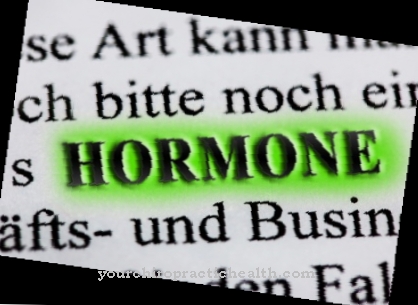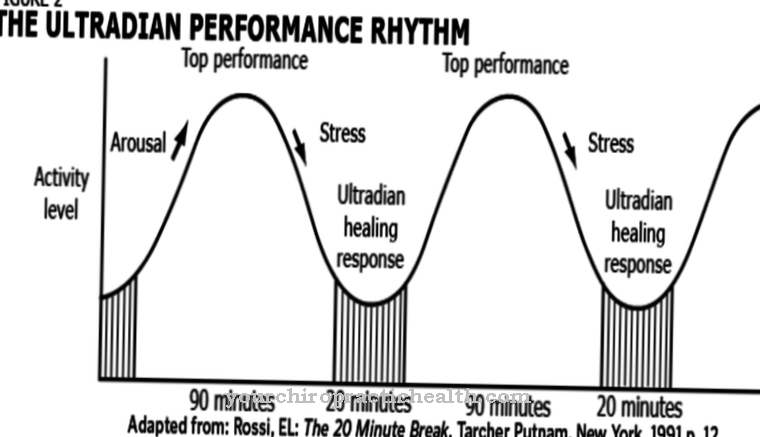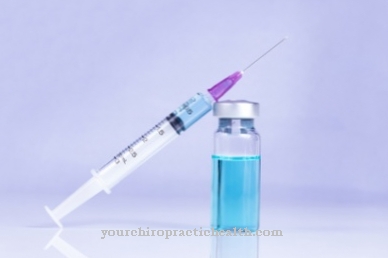Of the Oxygen content in the blood or even the Oxygen saturation is the sum of dissolved and bound oxygen as it is in arterial and venous blood. All cells and tissues in the body are supplied with oxygen via the blood. This supply is no longer guaranteed in the event of symptoms such as carbon monoxide poisoning.
What is oxygen saturation?

In lung respiration, the blood takes on the role of a transport medium. The erythrocytes are the most common blood cells in human blood and are also known as red blood cells. They can absorb oxygen and, thanks to their biconcave shape, fit through the thinnest of capillaries. From the pulmonary capillaries, they transport oxygen through the blood system to the organs of the entire body.
There are 24 to 30 trillion red blood cells in the blood. They determined the level of oxygen in the blood. This oxygen content is of medical relevance primarily as oxygen saturation. The oxygen saturation is the quotient of the actual blood oxygen and the maximum blood oxygen capacity. Normally, the oxygen level in the blood is given in the unit ml / dl. The gas volume of oxygen is calculated in milliliters per 100 milliliters of blood.
The oxygen content can refer to either the arterial or venous oxygen content in the blood. For arteries, the value is given as CaO2. In the case of veins, however, it is called CvO2. Above all, arterial oxygen is of great medical significance.
Function & task
Oxygen is carried in the blood in two different ways. On the one hand, it is in a physically dissolved form and, on the other hand, it is bound to the hemoglobin of the red blood cells. The dissolved form of oxygen in the blood is used to exchange oxygen between the blood plasma and the alveoli of the lungs. In addition, the dissolved form plays a role in the diffusion-based exchange between the blood plasma and the organs, tissues and cells.
The oxygen concentration of dissolved oxygen at a conventional partial pressure of oxygen in the alveoli is around three milliliters in the plasma of one liter of blood. However, oxygen has only limited solubility. For this reason it is bound to the divalent iron of hemoglobin.
This process is also known as oxygenation and ensures that all cells in the body are supplied with oxygen. During oxygenation, the hemoglobin molecules rearrange themselves. The central iron atom of the compound changes its position. With the bond, the hemoglobin is in a relaxed R-form, also known as oxyhemoglobin.
The affinity of hemoglobin towards oxygen depends on various factors. The pH value and the temperature play a central role. When the carbon dioxide content in the blood is low and the pH value is relatively high, hemoglobin has an affinity for oxygen. There is a high pH value in the alveolar capillaries of the lungs, while the carbon dioxide content is comparatively low. Therefore, the hemoglobin binds to oxygen in the capillaries of the lungs.
In the rest of the body there are relatively high CO2 concentrations with a relatively low pH value. For this reason, deoxygenation occurs. The hemoglobin slowly releases the oxygen again because its binding affinity is reduced. In this way, the entire body can be supplied with oxygen.
Oxygen is required for the metabolic processes of all cells. These metabolic processes are therefore also referred to as internal breathing and provide the organism with energy. Without the blood oxygen in its dissolved and bound form, the metabolic processes of the cells would be threatened and as a result the energy supply of the body would no longer be guaranteed.
Illnesses & ailments
If the arterial oxygen content falls below the normal values of 20.4 ml / dl in men and 18.6 ml / dl in women, then there is hypoxemia. Such a phenomenon can occur, for example, in the context of carbon monoxide poisoning. It is the main cause of fatal poisoning. The oxygen supply to the tissue is no longer guaranteed in the case of carbon monoxide poisoning. CO2 displaces the oxygen in the blood from the hemoglobin and the oxygen can no longer be transported through the body. The consequences can be fatal under certain circumstances.
Hypoxemia can also occur in the case of respiratory failure. The alveoli are under-ventilated as part of this phenomenon. Feelings of suffocation occur. Acute pneumonia is often the cause of respiratory failure.
A third reason for hypoxemia can be anemia (anemia). As part of this phenomenon, the hemoglobin concentration in the blood falls. The ability to bind oxygen is reduced. As a rule, the body tries to compensate for the lack of erythrocytes, and thus of hemoglobin, by increasing the heart rate. In this way, the organism would like to ensure the oxygen supply to the internal organs despite the anemia. Anemia usually occurs as a result of major blood loss. Blood formation disorders, kidney diseases or tumor diseases and chronic inflammatory diseases are also conceivable causes. More rapid fatigue and a shortage of air are the most common accompanying symptoms of anemia.
Hypoxia must be distinguished from hypoxemia. Parts of the body are no longer adequately supplied with oxygen. Fainting and a blue-gray skin color set in. Hypoxia can have ischemic, anemic or histotoxic causes, for example.

















.jpg)







.jpg)


